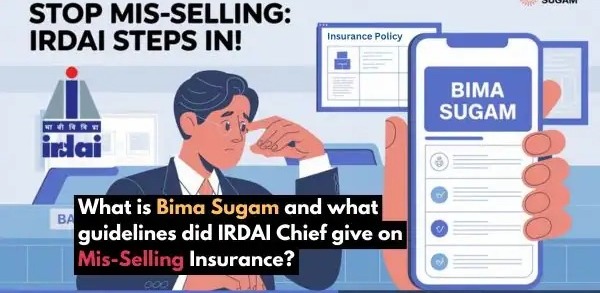Banerjee, J.@mdashThis second appeal arises out of an execution proceeding instituted in the following circumstances. The decree in the suit was made on June 20, 1935. An appeal from it was dismissed on January 30, 1934. An application for execution of the decree was made on August 14, 1934. In due course sale proclamation was published on July 21, 1935. But no further step having been taken, it was dismissed for default on December 4, 1935.
2. On June 23, 1937 one Surjya Narayan Roy claiming to be an assignee of the decree filed an execution case. It was registered. On August 20, 1937 the order registering the application was cancelled and the petition was treated as an application which gave rise to execution Case No.139 of 1939. This application was filed on September 1, 1939 and was dismissed for want of prosecution on June 4, 1941. In this execution case notice under Order 21 Rule 22 C.P.C. had been issued, followed by a notice under Order 21 Rule 66. This application again was dismissed for non-prosecution on June 4, 1941.
3. Execution case No.21 of 1943 from which this appeal arises was started on June 3, 1943. In this execution case, after notices under Order 21 Rule 22 and Order 21 Rule 66 C.P.C., the properties attached were sold. The question is whether this last execution case is out of time. It is quite clear that if the application made on June 23, 1937 is not regarded as a step in aid of execution, the application which was filed on September 1, 1939, was out of time. Therefore any order made in that application would be ineffective. Consequently, the present application would be time-barred. Originally the learned Subordinate Judge in this last mentioned execution case held that it was out of time. But on appeal the District Judge remanded the matter and the learned Subordinate Judge has revised his previous opinion and held that it is not time-barred. From that there was an appeal to the District Judge who has held that it is out of time. From the order of the District Judge the present appeal has been filed.
4. The learned Advocate-General appearing on behalf of the appellant has taken before us one point and one point only in support of the appeal, namely, that it is not open to the judgment-debtor to take the plea of limitation by reason of the fact that in the application which was started on September 1, 1939 there was an order for the issue of a notice under Order 21 Rule 22 C.P.C. followed by an order for publication of the sale proclamation under Order 21 Rule 66. According to Counsel, when the Court after issue of notice under Order 21 Rule 22 directed sale of the properties, it came to an implied finding that the application was not barred by time; otherwise, it could not order the sale.
5.The question before us is whether the notice under Order 21 Rule 22 was served on the Judgment-debtor. If the notice was not served, the Judgment-debtor had no opportunity to raise the question of limitation and therefore no question of res judicata arises. The only evidence the Judgment-debtor produced before the Courts below in proof of service of the notice was a certified copy of the suit register. There was no other evidence on this point. In the register there are entries showing that the notices were issued. But that does not mean that the notices were served. Such entries by themselves cannot prove service. It has been laid down in a Bench decision of this Court in Syed Mohiuddin v. Prithichand Lal Choudhury, (1915) 19 CWN 1159, where it was observed that the mere entry in the order sheet is no proof that the notice had been served. In this case we are unable to hold that there was service.
6. The Court issues notice under Order 21 Rule 22 where the decree is more than one year old or when the decree is sought to be executed against the legal representative of the Judgment-debtor. If the person to whom notice is issued under Order 21 Rule 22 does not appear or does not show cause to the satisfaction of the Court why the decree should not be executed, the Court shall order the decree to be executed (Order 21 Rule 23 C.P.C.). In this case after the issue of notice under Order 21 Rule 22 when there was no appearance by the defendant, the Court was bound to order the decree to be executed in such manner as the decree could be executed.
7. In this case the Judgment-debtor had not been served and did not appear to the notice under Order 21 Rule 22 and he did not raise nor had the opportunity to raise the issue of limitation. The Court issued notice under Order 21 Rule 66 and directed sale of the properties as it was incumbent on it to do so. We do not see how any question of res judicata arises.
8. Furthermore, in the case of Chatterput Singh v. Daya Chand Marwari, (1916) 23 CLJ 641, it has been held that if the Judgment-debtor does not appear to contest a notice under Order 21 Rule 22 he is not precluded from raising an objection when his property is attached. Assuming in this case that the notice under Order 21 Rule 22 was served, which we do not hold is the fact, the Judgment-debtor can raise objection to the sale and take the point of limitation.
9. There is another point of view from which we can come to the conclusion that the question of limitation is not res judicata. It is this: u/s 3 of the Limitation Act whether or not the point of limitation is taken by the defendant or the respondent in a suit or an application, the Court is bound to notice it in disposing of the matter before it. It has been held that the principles of this section apply to execution proceedings. In this case, therefore, the Court was bound to take the point of limitation itself and dismiss the application if it was not in time. Having failed to do so, it cannot be said that the Judgment-debtor is hit by res judicata or any principle analogous thereto.
10. We therefore hold that the plea of res judicata is no bar to the Judgment-debtor taking the point of limitation to the application under consideration. As the application was not in time, the Court was bound to dismiss it.
11. On these considerations we hold that the District Judge was right. The application is barred by time.
12. The appeal therefore is dismissed with costs, one set two gold mohurs.
Harries, C.J.
13. I agree.

